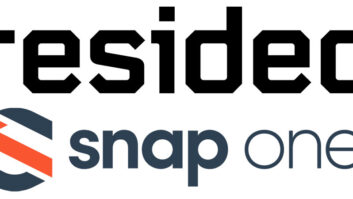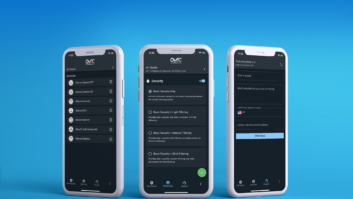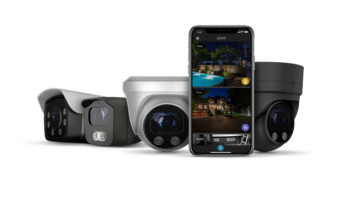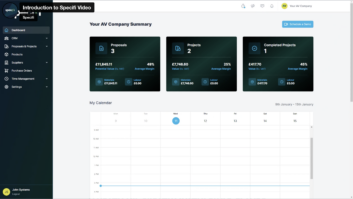
With E3 less than a month away, both Sony and Microsoft have taken the interesting stance of “pre-announcing” their next generation of console gaming platforms. Sony previewed PS4 a while back and Microsoft teased us this week with some top-level details on what we now know will be called “Xbox One.” We’ll all know more at E3, but what is clear at this point is that both of these new products will have significant impact on how consumers access and manage content as well as what games they play on them.
In a major design departure from the first two Xbox products, the Xbox One looks for all the world like a conventional consumer electronics product: an angular, sleek “liquid black” box with a slot loader for Blu-ray discs rather than the more complex ridged shape of the original Xbox or the curved design of the of Xbox 360. However, as always, what is inside is much more important than how it looks.
Starting with that drive, it is indeed a Blu-ray drive. This points to the fact that data-heavy games are still hard to distribute via broadband although it was noted that once a game is purchased and loaded it will be stored on the unit’s 500Gb internal HDD and the disc will not be required for future game play.
On the hardware side, Xbox One uses an 8-core, x86 architecture, AMD processor and has 8GB of memory. That is similar to what Sony has announced for PS4, but it remains to be seen if the use of a different type of memory by Microsoft will make a difference in video performance. On the connectivity side there is USB 3.0, WiFi b/g/n and gigabit ethernet. There is also WiFi direct, which will presumably be used for the new controller. That change will have some impact on the world of third-party accessories, particularly if a more home-theater-centric remote can be offered by third-party suppliers for those who plan to use Xbox One more as a media terminal than as a game console.
That Xbox One would have an HDMI output was a given, but what was not expected was that there would also be an HDMI input. This is key to the use case for Xbox One, as it will provide content grids presumably keyed to a connected STB. This is part of the additional enhancements to Kinect, which will now be both 1080p and standard with the console. We’ll have to wait until E3 for more details about built-in TV tuners and the precise service providers streaming content directly to the One so that no external STB is required. Regardless, this capability is something we’ll have to take into consideration while planning for how Xbox One will integrate with existing installations.
This also begins to lead to some of the “knowns” and the larger list of “unknowns.” For example, we know about the HDMI, but whether it will be the current or forthcoming new version is not known. It is known that there will be some level of 4K capability, but at this early date it is a bit squishy as to whether this will be for streaming content (possible), downloaded/stored/played back content (more probable), playback from discs (theoretically possible, but there is no standard for that yet), or for games (possible, but it remains to be seen). No matter what type of 4K content is ultimately made available, until we find out which flavor of HDMI will be used there is no way to know the limit on frame rate formats.
Another “known” is key for installation planning: for a variety of reasons, most likely to do with the use of x86 architecture rather than the PowerPC in the current Xbox 360, is that the new Xbox One will not playback games from the current Xbox 360. Where the client or someone in the household is an Xbox 360 player, that means you won’t be able to just take out the old Xbox and replace it with the new one; your systems from audio, video, and data to connections to, and the placement and connections of TWO Kinect sensor heads will be required. More fun: new controllers means more provisions needed for charging and storage.
The real fun, however, will come not only from what we expect to be vivid renditions of new games, but from the interaction with video services. Adding the aforementioned ability to view content from an external STB with the addition of listings, recommendations, and social media interaction to the current portfolio of connected services available gives the Xbox One the potential to be a disruptive product in the universe of connected entertainment set-top products. The proof will come in the pudding at E3 when we know more about the specifics of both Xbox One and PS4 as well as any additions to the feature set and service line card for WiiU.
One semi-known point of interest was the announcement that Steven Spielberg will be part of television series based on the hit game Halo. What distribution channel will be used and what the nature of the interaction and integration with Xbox One are just a few more things to add to the “we hope they talk more about this at E3” list.
Oh, one and a half more things to add to the “unknowns…” We will all have to wait until E3 to find out anything more than the vague introduction date of “this year” that we know so far. The biggest unknown, of course, is the price. Both Sony and Microsoft have given us all a tease as to features, underlying technology and marquee title first- and third-party games. Neither has given any indication of the price. Will they be priced the same? Will one cost more than the other, and if so how will that fall out?
That is perhaps the most interesting thing we’ll be looking at next month at E3. Of course, we will be there to bring you all the news here in the RS blog and in our print and online editions. For instant tidbits from E3 and other trade shows and conferences we attend, follow me on Twitter @captnvid.
Based in Sherman Oaks, CA, Michael Heiss is a contributing editor to Residential Systems.







